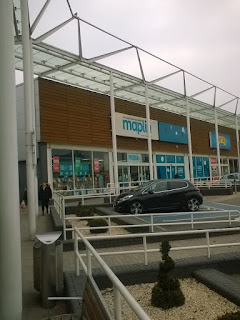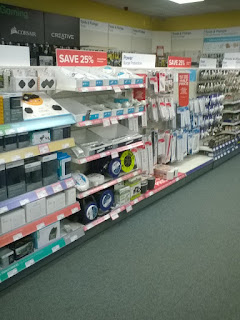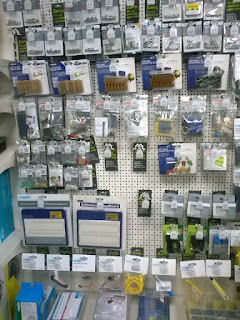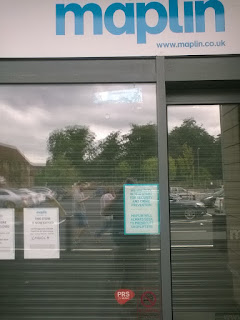 RAC contest and the new IC7610
RAC contest and the new IC7610
 |
| Won't make that mistake agian. |
I was thrilled with the Icom 7610 I didn't as of yet get the time to set up N1MM+ contest software so during the contest I was old school with a paper and pencil. The audio was crisp and clean, I stayed with the 250Hz filter and had not even one issue with very close adjacent stations bothering my contact station. The touch screen is very responsive and an absolute joy to use. I took advantage of the 2 independent receivers, I turned on dual watch and had one VFO on an RAC station such as VE7RAC who was very popular and the other VFO I search and pounced. With one simple button push I muted the VE7RAC station and could unmute to check on the pileup. Once things slowed down I was able to put VE7RAC in the log.
 |
| Dual Watch on |
Mike Weir, VE9KK, is a regular contributor to AmateurRadio.com and writes from New Brunswick, Canada. Contact him at [email protected].
 2019 Technician License Class
2019 Technician License Class

Black Forest, Colorado; Sat March 16 and 23; 8 AM to 5 PM
Black Forest Fire Station, intersection Burgess Rd. & Teachout Rd.
The Technician license is your gateway to the world-wide excitement of Amateur Radio, and the very best emergency communications capability available!
• Earn your ham radio Technician class radio privileges
• Pass your FCC amateur radio license exam right in class on the second day
• Multiple-choice exam, No Morse Code Required
• Live equipment demonstrations
• Learn to operate on the ham bands, 10 Meters and higher
• Learn to use the many VHF/UHF FM repeaters in Colorado
• Find out how to participate in emergency communications
Registration fee: $30 adults, $20 under age 18
In addition, students must have the required study guide: HamRadioSchool.com Technician License Course Third Edition, effective 2018 – 2022, $22.95 print, $19.99 Kindle
Advance registration is required (No later than two weeks before the first session, earlier is better, first-come sign up basis until class is full.) To register for the class, contact: Bob Witte KØNR Email: [email protected] or Phone: 719/659-3727
Sponsored by the Tri-Lakes Monument Radio Association For more information on amateur (ham) radio visit www.arrl.org
The post 2019 Technician License Class appeared first on The KØNR Radio Site.
Bob Witte, KØNR, is a regular contributor to AmateurRadio.com and writes from Colorado, USA. Contact him at [email protected].
 Radio Bench Fun!
Radio Bench Fun!

Every once in awhile I’m reminded of the magic of radio and why this hobby is so much fun!
For the past week and a bit, in between power outages of up to four days, I’ve been optimizing a circuit from the December ‘36 ‘Radio’ magazine.
It looked like it might be something that would be fun to use during the weeknight NRN (Novice Rig Nights) activities ... a Jone’s-style push-pull crystal power oscillator using a pair of 6V6s. The original article called for 6L6s but my power supply can probably not provide much more power than is already coming from the 6V6s and these will likely be easier on my few precious novice-band crystals.
The circuit is lashed-up on my very well-worn 'aluminum breadboard', which is peppered with numerous convenient holes punched or drilled for mounting various crystal sockets, tube / coil sockets, variable caps etc ... it really looks awful but allows easy parts swapping to test out different configurations.
This afternoon I had the thing perking to my satisfaction, along with a very sweet-sounding CW note, using my WWII - era 7121kc crystal. Everything looked good into the dummy load so I connected the 40m antenna through the tuner, clipped the bug to the cathode resistor and at about 40 minutes before sunset, sent a short ‘CQ’, hoping for a nearby local but not really expecting a reply ... now this is the magic part.
My CQ was immediately pounced-upon by John, N2BE, on the other side of the continent, in New Jersey! I shook my head at the dangling pile of clip leads and just-barely soldered components clamped in the bench vice and had to smile when he gave me a 589 report! John was working the AWA's Linc Cundall CW Contest, where rigs must be pre-1950 designs or builds. I was happily able to give him a legitimate point, using my 1936 Jones oscillator!
At 400V on the plates, the little lash-up puts out 18 watts and seems to be about 45% efficient ... not too bad for a power oscillator. As well, the crystal current must be low as it keys nicely and doesn't sound stressed.
I’ll soon be rebuilding the little transmitter into something more presentable, probably similar to my Tri-Tet-Ten, using the short-lived but visually attractive mid-30’s building style that mated a shiny aluminum plate to a nice wooden base.
Stay tuned ... I’ll hopefully have it completed over the next few weeks and will be looking for some 80 / 40m NRN Monday night fun!
Steve McDonald, VE7SL, is a regular contributor to AmateurRadio.com and writes from British Columbia, Canada. Contact him at [email protected].
 AmateurLogic 125: Happy New Year
AmateurLogic 125: Happy New Year
AmateurLogic.TV Episode 125 is now available for download.
The official unedited version of our almost 4 hour 2018 New Year’s Eve Celebration live stream.
An International group of guest help ring in the New Year with tales of the past year in Ham Radio and projects.
Plus classic AmateurLogic.TV ‘Half Speed Theater.’
George and Tommy welcome:
Mike Morneau, VE3MIC
Laird Nigel P Lawrence G0MEJ KG0PL
Andy Anderson, KP4AAN
Carmen M Centeno Calero, WP4QER
Dan Van Evenhoven, N9LVS
Amanda Alden, K1DDL
Jeff Carrier, K0JDS
A cameo appearance by Emile Diodene, KE5QKR.
3:56:45
George Thomas, W5JDX, is co-host of AmateurLogic.TV, an original amateur radio video program hosted by George Thomas (W5JDX), Tommy Martin (N5ZNO), Peter Berrett (VK3PB), and Emile Diodene (KE5QKR). Contact him at [email protected].
 Top Five K0NR Blog Posts for 2018
Top Five K0NR Blog Posts for 2018

Closing out 2018, here are the top five blog posts at k0nr.com during the year. Apparently these posts are “evergreen content” because they were all written years ago, well before 2018. With the exception of the Baofeng cable article, they were all on the top five list last year.
Happy New Year and 73 from Bob/K0NR
The post Top Five K0NR Blog Posts for 2018 appeared first on The KØNR Radio Site.
Bob Witte, KØNR, is a regular contributor to AmateurRadio.com and writes from Colorado, USA. Contact him at [email protected].
 Maplin the end or is it?
Maplin the end or is it?
Steve, G1KQH, is a regular contributor to AmateurRadio.com and writes from England. Contact him at [email protected].
 Ham College 48
Ham College 48
Ham College episode 48 is now available for download.
General Amateur Radio Exam part 19. Overmodulation and Test Equipment.
1:16:01
George Thomas, W5JDX, is co-host of AmateurLogic.TV, an original amateur radio video program hosted by George Thomas (W5JDX), Tommy Martin (N5ZNO), Peter Berrett (VK3PB), and Emile Diodene (KE5QKR). Contact him at [email protected].
























